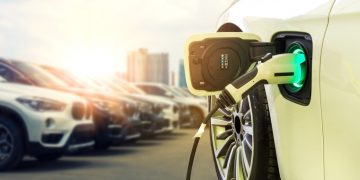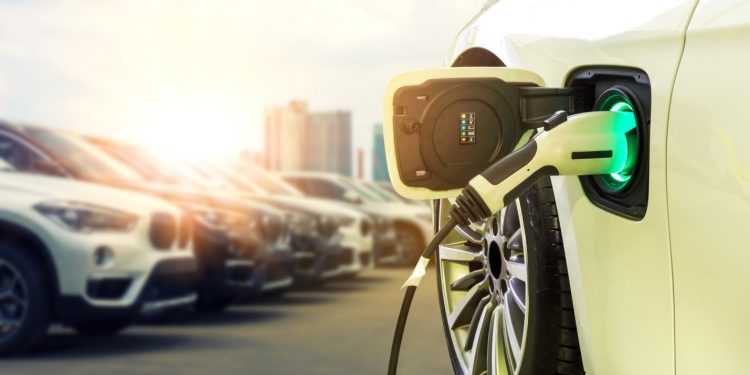Electric vehicles are one of the fastest-growing industries in the world. That’s why a company like Tesla, which pretty much exclusively makes and sells electric vehicles, is now one of the most valuable companies in the world.
And now practically every major auto manufacturer is also coming out with their own electrical vehicle lineup.
When you drive an electric vehicle, it looks and feels like a traditional combustion engine vehicle. Some cars even have imitation grills even though they don’t actually do anything. The real difference between these cars is underneath the hoods.
So how do electric cars work? That’s a great question and we have the answers that you are looking for. So if you would like to learn more then keep on reading and we will take you through everything that you will want to know!
Parts of an Electric Vehicle
An electric vehicle does not have spark plugs, carburetor, radiator, or an engine. Many electric vehicles have put a front trunk where the engine would be normally located.
The empty space also brings more safety to these cars. They now have a large crumple zone so that they can better absorb force from collisions.
Electric vehicles function differently from traditional cars but they have a similar set of systems.
Electric Vehicle Exhaust System
When you get behind the wheel of an electric vehicle for the first time, you will likely be surprised by the lack of noise and vibration that the vehicle creates. When the car is stopped at an intersection, only the lights on the control panel are going to indicate to you that your car is still on.
There are also no tailpipe emissions. This means that electric cars can help you decrease your impact on climate change. You can also use sources like energysecurityagency.com to make sure that old electric vehicles are recycled properly.
Electric Vehicle Batteries
Electric vehicles run on batteries. These batteries store energy to make the car move. The battery is actually made up of a bunch of small lithium battery modules. These modules are made out of tiny battery cells that are about the size of AAA batteries.
The batteries are linked together in electrical circuits. This allows the batteries to provide as much power as possible in the most efficient way.
Battery technology is quickly evolving. New manufacturing processes and chemistries are constantly being discovered. All of this is being done in order to increase the power of the batteries while lowering the cost of using the battery.
One of the dangers of these lithium batteries is thermal runaway. This can lead to explosive fires. In order to make sure that there are no explosions or fires, the battery pack is colled with a protective casing and a thermal management system.
With that said, drivers don’t usually have a need of being worried about these issues. There are far more gasoline car fires every day in the United States than fires in cars run on batteries.
The Motor
In an electric car, the motor converts electrical energy into mechanical energy. After electricity is sent from the battery to the stator – a stationary part of the motor – it creates a magnetic field. This field then turns a rotating component, known as the rotor.
The spinning rotor will make the mechanical energy that spins the wheels of the car using just one gear. The more electricity that is used, the faster the rotor moves.
Also, there isn’t any shifting between gears in these kinds of cars. This means that transitions between deceleration and acceleration are going to be smooth.
A gas-powered vehicle can only have one combustion engine. An electric car, on the other hand, can have several motors. And all of these motors can act independently.
A dual-motor car has one motor. The motor is used for city driving. Another motor is dedicated to driving at fast speeds.
It is also possible to utilize four-wheel drive when you are in an electric car. This is because each wheel can actually have its own motor.
This can lead to more traction and maneuverability. Your tires can also rotate in different directions. That will allow you to enable fast turning.
How to Drive Electric Vehicles
Electric cars are able to accelerate with ease and provide immediate forward propulsion. Because regular cars start at low RPMs and increase through gear shifts, there’s a lag when reaching maximum torque.
Electric cars don’t have this problem. Once you hit the accelerator, you immediately reach maximum torque.
When you brake in an electric car, you use regenerative braking. This takes energy away from the momentum of the car. The electricity is sent back to the battery, so you don’t waste any energy.
Driving in this mode means that the vehicle will slow aggressively whenever you take your foot off of the brake. If you want to stop, you just need to take your foot off of the brake and not worry about the brake pedal as much.
The Importance of Knowing How Do Electric Cars Work
Hopefully, after reading the above article, you now have the answer to the question, “how do electric cars work?”
As we can see, electric vehicles use some of the same principles as regular cars but their ways of achieving those results are unique.
Are you looking for other helpful articles like this one? Check out the rest of our site today for more!













